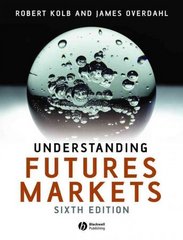Question
Corp A acquired all of the outstanding $10 par voting stock of Comp T on January 1, 2019 in exchange for $50,000 shares of its
Corp A acquired all of the outstanding $10 par voting stock of Comp T on January 1, 2019 in exchange for $50,000 shares of its $10 par common stock with a market price of $15 per share. Both companies continued to operate as separate business entities maintaining separate accounting records with years ending December 31. Additional information for 2019 follows:
There were no changes in the common stock and additional paid-in capital accounts during 2019 except the one necessitated by Comp As acquisition of Comp T.
At acquisition date the current value of Comp Ts machinery exceeded its book value by $54,000. The excess will be amortized over the estimated average remaining life of 6 years. The fair value of other assets and liabilities were equal to their book values.
An impairment test at the end of the year indicated that goodwill had lost $3,000 of its value.
On July 1, 2019, Comp A sold a building, including land, to Comp T for $129,000 cash. At the date of sale, the book value of land was $33,000 and building was $66,000. Comp T allocated the $129,000 purchase price to the land for $43,000 and to the building for $86,000. Comp T depreciated the building over its estimated 5 year remaining useful life by the straight-line method with no salvage value.
During 2019 Comp A purchased merchandise from Comp T at an aggregate invoice price of $180,000, which included a 100% markup on Comp Ts cost. At December 31, 2019, Comp A owed Comp T $75,000 on these purchases, and $36,000 of the merchandise purchased remained in Comp As inventory.
Trial balance at December 31, 2019 for both companies follows:

Required:
1. Calculate the amount of goodwill, if any, at acquisition date.
2. Record the eliminating entries regarding capital accounts
3. Record the required adjustments entries concerning depreciation and/or amortization of excess value, if any.
4. Record the eliminating entries regarding intercompany transactions
Complete the consolidation worksheet to prepare consolidated financial statements for the year ended December 31, 2019.
Part 2 Same exercise assuming that Comp A purchased 80% of outstanding common shares of Comp T.
Cash Accounts receivable Inventory Property & equipment Accumulated depreciation Investment in CompT Accounts payable Common stock ($10 par) Additional paid-in capital Retained earnings (1/1/2019) Dividends paid Net sales Dividend income from CompT Gain on sale of building Cost of goods sold Operating expenses Comp A CompT $ 285,000 $150,000 430,000 350,000 530,000 410,000 660,000 680,000 (185,000) (210,000) 750,000 670,000 594,000 1,200,000 400,000 140,000 80,000 220,000 156,000 (40,000) 1,900,000 1,500,000 40,000 30,000 1,180,000 870,000 550,000 440,000 Cash Accounts receivable Inventory Property & equipment Accumulated depreciation Investment in CompT Accounts payable Common stock ($10 par) Additional paid-in capital Retained earnings (1/1/2019) Dividends paid Net sales Dividend income from CompT Gain on sale of building Cost of goods sold Operating expenses Comp A CompT $ 285,000 $150,000 430,000 350,000 530,000 410,000 660,000 680,000 (185,000) (210,000) 750,000 670,000 594,000 1,200,000 400,000 140,000 80,000 220,000 156,000 (40,000) 1,900,000 1,500,000 40,000 30,000 1,180,000 870,000 550,000 440,000Step by Step Solution
There are 3 Steps involved in it
Step: 1

Get Instant Access to Expert-Tailored Solutions
See step-by-step solutions with expert insights and AI powered tools for academic success
Step: 2

Step: 3

Ace Your Homework with AI
Get the answers you need in no time with our AI-driven, step-by-step assistance
Get Started


